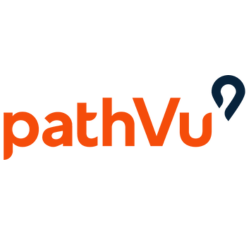In honor of National AccessAbility Week (May 25th-31st, 2025)
The word “accessibility” appears everywhere these days—in corporate mission statements, government policies, and architectural guidelines. But for people with disabilities—whether navigating the world using wheelchairs or white canes—accessibility isn’t just a buzzword. It’s the difference between participation and exclusion, independence and dependency, dignity and frustration.
Beyond the Basics
When most people think of accessibility, they might picture wheelchair ramps, braille signage, or closed captions. While these are essential, true accessibility extends far beyond these basics. It means spontaneously joining friends for dinner without researching whether the restaurant has steps– something a person without a physical disability never has to consider.
True accessibility is invisible to those who don’t need it, but transformative for those who do.
“As a wheelchair user myself, I experience firsthand how pathway accessibility impacts daily life and independence. At pathVu, we’re not just mapping sidewalks—we’re mapping freedom. Our technology gives people with disabilities the information they need to navigate their communities confidently and gives municipalities the data they need to make meaningful improvements. We’re creating a world where no one has to wonder if they’ll be able to get where they need to go.” — Nick Sinagra, Director of Technology, pathVu
The Public Space Challenge
Our vision is to be the Google Maps for accessible pedestrian pathways, sidewalks, and trails, providing routes configured to each user’s abilities so that everyone has full and safe access to every public and private pedestrian path. pathVu’s mission is to create a more accessible and livable world by improving mobility along pedestrian pathways for all individuals of any ability.
One seemingly mundane aspect that profoundly impacts daily life for many people with disabilities is navigating public spaces—particularly sidewalks and streets.
Safe, well-maintained public pathways are not a luxury but a necessity. Yet they remain one of the most overlooked aspects of urban accessibility. Here’s what makes public spaces truly accessible:
- Even surfaces: Cracked pavement isn’t just inconvenient—it’s hazardous for wheelchair users, creates tripping hazards for the elderly and those with visual impairments, and presents challenges for people using canes or walkers. pathVu’s mapping technology identifies these hazards to help cities prioritize repairs.
- Adequate width: Narrow sidewalks force wheelchair users into dangerous situations, make navigation difficult for blind pedestrians, and complicate passing for those using mobility aids. pathVu measures and documents pathway widths to ensure they meet accessibility standards.
- Proper curb ramps and detectable warning surfaces: These features need to be well-designed, properly sloped, and available at every intersection. They not only benefit wheelchair users and provide crucial navigational cues for pedestrians with visual impairments, but they improve mobility for parents with strollers as well.
- Audible signals: Crossing signals that can be heard help blind/low vision individuals navigate intersections safely and assist those with cognitive disabilities.
- Weather management: Sidewalks that become unusable when covered with snow or ice affect everyone, especially those with mobility challenges.
- Construction alternatives: When pathways undergo repairs, detours must consider accessible alternatives for all types of disabilities. They should not simply place a sign in the middle of the sidewalk, which creates another barrier that many cannot read.
Every time a person with a disability encounters an environment that hasn’t considered their needs, the message is clear: this space wasn’t designed with everyone in mind.
The goal of true accessibility is a world where everyone can participate fully, regardless of ability. It is rooted in systemic growth that spans all lifetimes.
If you are a civil engineer or city mobility planner, or just someone who wants to learn more about pathVu, please contact us today at info@pathvu.com.
